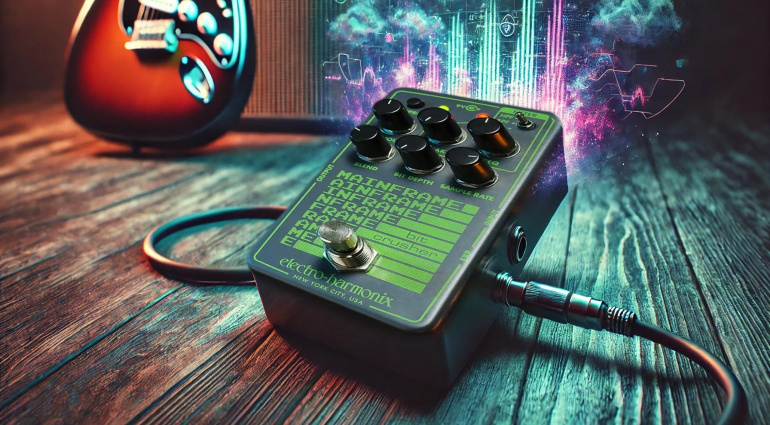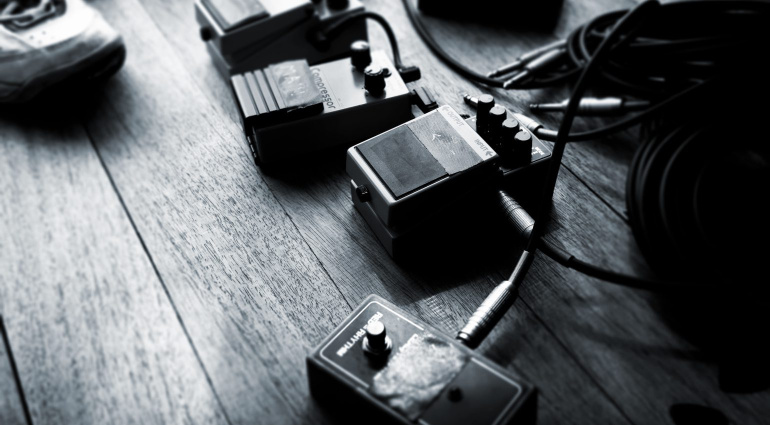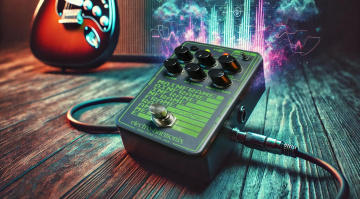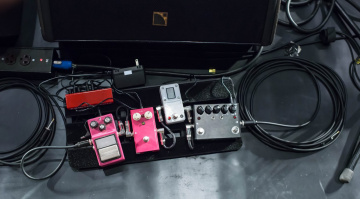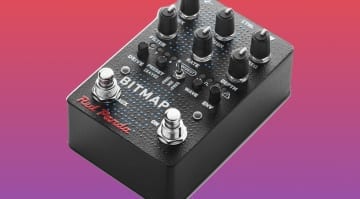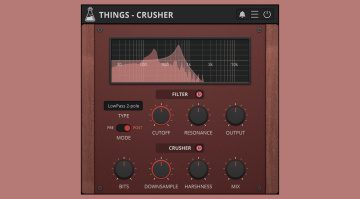Best Bitcrusher Pedals: Much More than Lo-Fi
Best Bitcrusher Pedals: I’ll be honest with you, I’ve only really started getting to know these little magic boxes very recently. But that’s no reason not to share with you the info and ideas I’ve come up with for one of the more obscure effects.
Everything you need to know
Originally published at Gearnews.de by Jan Rotring, translation by Julian Schmauch.
I was a bit late to the bitcrusher party. I read about last year’s PlayStation anniversary and, thanks to the YouTube algorithm, came upon a video about the most important gaming soundtracks. In terms of guitar, of course.
The more I thought about the challenges faced by 8- and 16-bit composers, the stronger was my urge to try it myself. I quickly found what I was searching for the perfect effects device: bitcrusher pedals for guitar. I personally currently use the Electro Harmonix Mainframe Bit Crusher, one of the best bitcrusher pedals.
What is a Bit Crusher pedal?
A bitcrusher pedal is an effect that distorts the sound by deliberately reducing the signal’s bit rate and/or sample rate. The sound is intentionally ‘deteriorated’ to make it sound rougher, distorted and often somewhat chaotic.
The effect’s name is derived from the technique behind it: a bitcrusher ‘crushes’ the digital bits that make up the audio signal. Technically speaking, a bitcrusher pedal affects two crucial parameters of a previously digitized signal:
1. Bit rate: This determines how much dynamic information is stored per sample. A lower bit rate reduces the signal’s depth of detail, often perceived as ‘gritty’ or ‘lo-fi’.
2. Sample rate – This indicates how many samples are recorded per second. This reduction produces effects that distort the sound and give it a kind of digital grain. As with image processing, this is known as aliasing.
A bitcrusher pedal is great for creating experimental sound design that evokes the aesthetics of early video games or computer technology – hence my initial excitement. We guitarists are given an exciting opportunity to break up traditional (mostly analogue) sounds and discover endless new possibilities.
What makes a bitcrusher pedal special is that it doesn’t have an analog signal path like most other effects – such as overdrive or chorus – but delves deep into digital signal processing. This means that the signal is not simply ‘changed’, but literally ‘dismantled’. Many tonal characteristics can be preserved while radical changes in the character of the sound are achieved. It gets exciting when the guitar can no longer be identified as the ‘source’ of a sound.

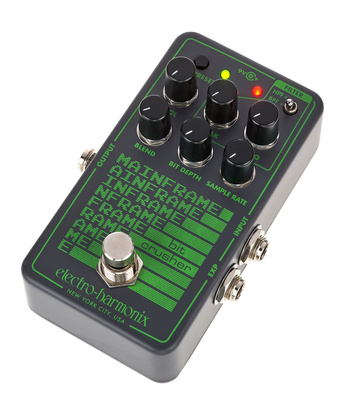
Best Bitcrusher Pedals: What does this effect sound like?
Bitcrusher pedals have a distinctive sound quality that comes from the reduction in bit rate in the signal. The audio signal is intentionally coarser and loses detail, almost pixelating the sound.
At the same time, a lower sample rate causes frequency artifacts and aliasing to occur – effects that sound unusual and fascinating to the human ear. If you want to experience this in a different context, feel free to tweak your DAW audio settings. I do not take responsibility for damaged project files!
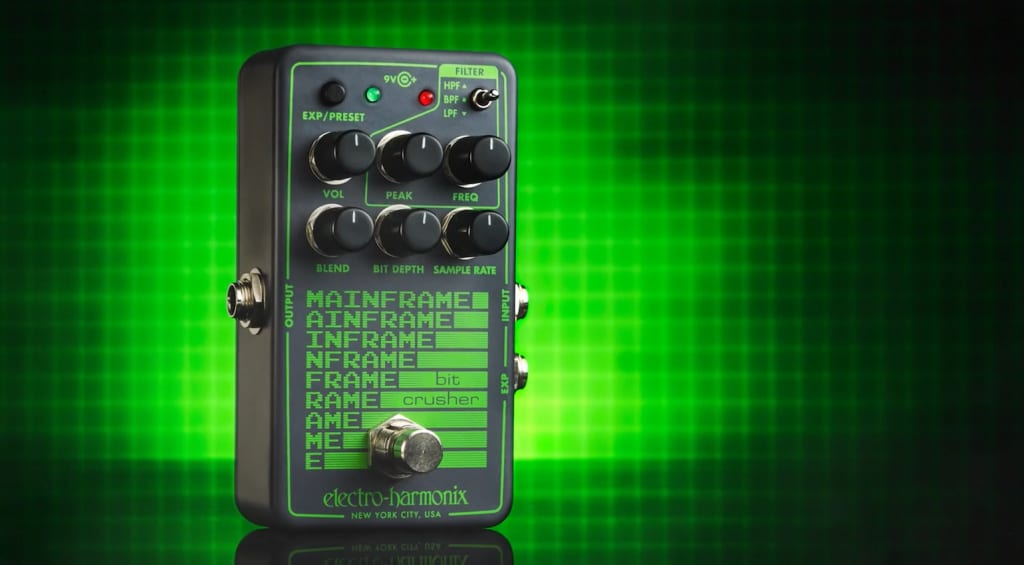
Depending on the intensity of the effect, the sound palette ranges from subtle lo-fi charm to aggressively destroyed sound textures no longer recognizable as guitar riffs.
Bit Crusher pedals in music
Bitcrusher pedals are particularly popular in industrial, glitch, and experimental electronic music because they stand out from conventional effects. However, there are a few guitarists in more traditional genres, such as rock and metal, who also use bitcrushers to make their sounds more interesting and original. Musicians like Matt Bellamy from Muse or Jack White use these effects to add a touch of chaos and experimentation to their songs.
One major difference between a bitcrusher and other, more well-known effects such as distortion or overdrive is that it doesn’t create harmonic overtonesm but instead digitally fragments the signal.
While overdrive makes the sound ‘warmer’ and fuller, the Bit Crusher deliberately makes it sound ‘broken’ and artificial. This destructive element makes it a creative tool that not only stands out but also offers completely new possibilities for musical storytelling.


Tips and tricks
A bitcrusher can offer an amazing range of creative uses for guitarists. With its unique sound, it can be used in a variety of musical contexts. Whether it’s to emphasize the riff at the forefront of a song or to create subtle textures in the background, there are loads of possibilities! Here are some of the most exciting uses for it, that I’ve been able to test out in my short time with the Bit Crusher pedal:
Rhythm guitars: groove and drive
A bitcrusher can give an otherwise ordinary rhythm guitar performance a raw and unpolished quality, adding an aggressive, digital edge. A slightly rolled-off bitcrusher pedal produces a lo-fi-like aesthetic that’s perfect for minimalist and groovy arrangements. Think of the groove of Kyuss’ “Green Machine”.
Leads and solos: experimental tones
A bitcrusher can be a real game-changer for lead guitars and solos. It breaks up notes to their purest form and transforms them into something completely new. I love gentle, more fragile lead sounds with a subtle lo-fi touch that result from a more restrained use of the effect. A bitcrusher pedal can be a real highlight for solos in progressive music or experimental projects, and it’s okay to crank it up.
Sound design: combining a bitcrusher with other effects to create soundscapes
Combining a bitcrusher effect with effects like delay, reverb, or modulation can create unique soundscapes. For example, a delay combined with a subtle bit crusher effect creates rhythmically chopped echoes that sound like something from a futuristic world. And in combination with reverb, you can get digital sound textures reminiscent of the intro to a science fiction film.
Practical tips and tricks
The bitcrusher is a versatile audio tool, but it can also be a bit finicky. But you can get the most out of this effect with the right settings and a well-thought-out approach.
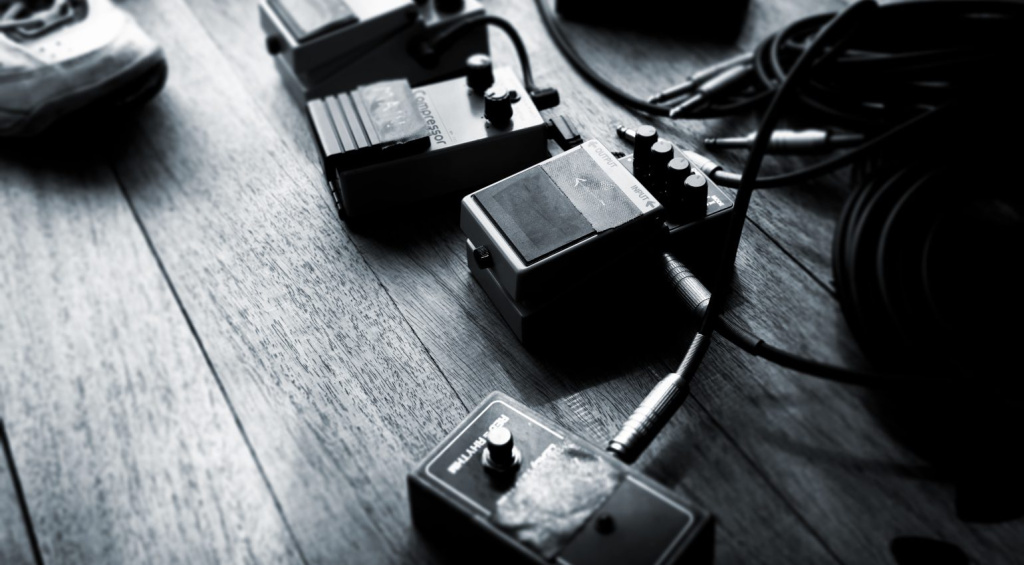
Bit rate and sample rate
The key to using a bitcrusher pedal effectively lies in finely tuning its bit rate and sample rate. A higher bit rate (e.g. 12 or 16 bits) produces more subtle, warmer sounds. In comparison, a more drastic reduction to 8 or even 4 bits creates a harsh, rough sound.
Similarly, if you moderately lower the sample rate, you get charming lo-fi vibes, while extreme values create shrill and chaotic effects. It’s worth experimenting with both parameters to find the sound you want.
Keep an eye on dynamics and output level
A bitcrusher can drastically change the signal and sometimes lead to drastic volume spikes. Especially in a live performance, ensure that the effect remains well embedded in the mix. A compressor pedal before or after the bit crusher can help to control the dynamics and make the sound more balanced.

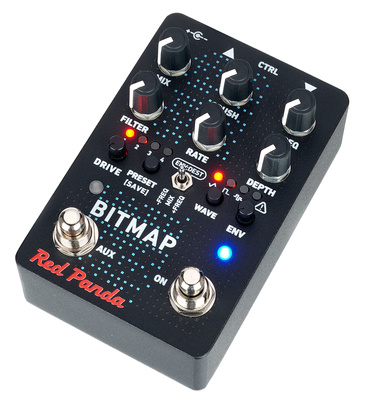
Live performance: use the effect purposefully
A bitcrusher pedal can be a real attention-getter in a live setting when used sparingly and to good effect. Too much of it can quickly clutter the overall sound or make it unintelligible. A good approach is to use it only in intros, breakdowns or solos as a sonic accent. An effect loop or an expression pedal that controls the intensity of the effect can also be handy, but it takes a bit of fiddling to get it right.
I hope these tips help you to use a bitbrusher pedal not just as an effect, but as a creative tool, and to flatten the initial learning curve a little. With a little experimentation, I’m sure it will turn out well!


Conclusion: Bit Crusher as a creative tool
Whether you’re looking for subtle lo-fi textures or radical sound experiments, a bitcrusher pedal can be a versatile tool that no effects chain should be without if you want to be creative.
For those who are now wondering which Bbtcrusher pedal is right for their own purposes: We will soon be dedicating ourselves to a purchasing advisor of recommended pedals. From entry-level pedals to boutique options, we’ll provide an overview that will help you find the perfect model for your individual sound.
*Disclaimer: This post contains affiliate links and/or widgets. When you buy a product via our affiliate partner, we receive a small commission that helps support what we do. Don’t worry, you pay the same price. Thanks for your support!

 3,6 / 5,0 |
3,6 / 5,0 | 